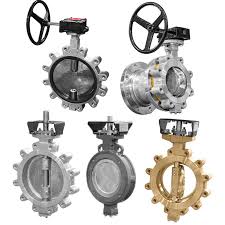
- Call Us
- +8618633052223
- njhdvlz@163.com
Οκτ . 15, 2024 17:30 Back to list
Hydronic Check Valve Manufacturing Process and Quality Control Techniques
Understanding Hydronic Check Valves A Vital Component in HVAC Systems
In modern heating, ventilation, and air conditioning (HVAC) systems, the efficient flow of water is crucial for maintaining comfort and energy efficiency in buildings. One essential component that plays a pivotal role in these systems is the hydronic check valve. This article explores the function, types, applications, and advantages of hydronic check valves, emphasizing their importance in HVAC systems.
What is a Hydronic Check Valve?
A hydronic check valve is a device designed to allow fluid to flow in one direction while preventing backflow in the opposite direction. This function is critical in hydronic systems, which use water as the primary medium for heat transfer. By ensuring unidirectional flow, check valves protect pumps and other system components from potential damage caused by backpressure or reverse flow.
How Do Hydronic Check Valves Work?
The operation of a hydronic check valve is relatively straightforward. When the fluid flows in the intended direction, it pushes against a disc or ball within the valve, keeping it open and allowing the flow to continue. If the flow attempts to reverse due to pressure fluctuations, the disc or ball is pushed against the valve seat, closing it off. This design prevents backflow, which can lead to system inefficiency, noise, and even damage to other components in the heating or cooling system.
Types of Hydronic Check Valves
Hydronic check valves come in various designs, with the most common types being
1. Swing Check Valves These valves use a hinged disc that swings open and closed. They are suitable for larger pipes and are known for their low pressure drop when open. However, they may not close as quickly as other types, which can sometimes lead to water hammer.
2. Lift Check Valves These valves utilize a movable disc that lifts off the seat during forward flow. They are more effective in smaller pipes and can handle higher flow rates. However, they may create a higher pressure drop compared to swing check valves.
3. Dual-Plate Check Valves These compact valves use two plates that pivot on a common axis. They are ideal for tight spaces and offer a low pressure drop, making them efficient in both residential and commercial HVAC systems.
4. Spring-Loaded Check Valves These check valves incorporate a spring mechanism that ensures the valve closes quickly in response to backflow, providing added security against reverse flow.
Applications of Hydronic Check Valves
hydronic check valve factory

Hydronic check valves are widely used in HVAC systems for various applications, including
- Boiler Systems They prevent backflow of hot water, protecting the boiler and ensuring efficient temperature control.
- Chilled Water Systems They maintain the flow direction in chilled water applications, preventing the mixture of hot and cold water
.- Radiant Heating In radiant heating systems, check valves help maintain the desired flow, ensuring evenly distributed heat throughout the building.
- Commercial and Industrial Systems Large-scale HVAC systems benefit from check valves to maintain system integrity and efficiency.
Advantages of Hydronic Check Valves
The inclusion of hydronic check valves in HVAC systems offers numerous benefits, including
- Protection Against Backflow By preventing reverse flow, check valves protect pumps and piping from damage, thereby extending the lifespan of system components.
- Energy Efficiency Maintaining a proper flow direction ensures optimal system performance, leading to energy savings and reduced operational costs.
- System Reliability With check valves installed, HVAC systems are less prone to errors and failures, enhancing overall reliability.
- Noise Reduction Properly functioning check valves can minimize water hammer and reduce system noise, contributing to a more pleasant indoor environment.
Conclusion
Hydronic check valves are a vital component in the efficient operation of HVAC systems. Their ability to prevent backflow ensures the protection of various system components, enhances energy efficiency, and contributes to overall system reliability. As we move towards more energy-efficient and sustainable building practices, understanding the role of hydronic check valves becomes increasingly important for engineers, contractors, and building owners alike.
-
2 Inch Butterfly Valve | High-Performance & Compact
NewsJul.22,2025
-
Compact Double Flanged Short Pattern Butterfly Valve | Space-Saving Design
NewsJul.21,2025
-
Series F170 Lug Type Butterfly Valve: Durable Flow Control Solution
NewsJul.21,2025
-
High-Quality PTFE Check Valve Manufacturer Reliable PTFE Check Valve Suppliers & Factories
NewsJul.08,2025
-
Techno Check Valve - Reliable Flow Control Solutions from Leading Manufacturer and Suppliers
NewsJul.08,2025
-
Butterfly Valve 65mm Price - Reliable Factory Supplier & Exporter
NewsJul.07,2025